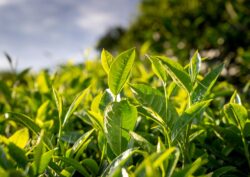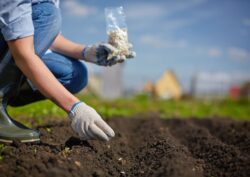Spring is the season that marks nature’s rebirth after the cold winter, bringing with it a series of significant changes both in the environment and in agricultural activity. In agriculture, this season has a direct impact on crops, production, and the management of natural resources. From warmer temperatures to increased sunlight, these factors directly influence crop productivity.

Characteristics of Spring
Spring is characterized by a gradual increase in temperature, longer days, and more exposure to sunlight. These changes not only affect fauna and flora but also alter the conditions of the soil, water, and air—elements essential for the healthy development of crops.
The rise in temperature, in particular, is key to the transition of crops from the dormant phase, typical of winter, to the active growth phase. The increase in daytime temperatures, moderated by cooler nights, allows seeds to germinate, young shoots to grow quickly, and plants to fully engage in their photosynthetic processes without factors that might affect or inhibit their physiology.

Positive Effects of Spring on Agriculture
During spring, the favorable effects are numerous, and agriculture mainly benefits from the following aspects:
- Temperature and Seed Germination: The moderate temperatures of spring provide the perfect environment for seed germination. Many crops, such as cereals, legumes, vegetables, and flowers, require these conditions to begin their life cycle. Without spring warmth, many seeds would not germinate or would do so poorly.
- Increased Sunlight: In spring, the days begin to lengthen, increasing the hours of light available for crops. Photosynthesis, the process by which plants convert sunlight into energy, is enhanced. This accelerates plant growth and, consequently, increases crop production.
- Soil Moisture: Spring rains play a crucial role in maintaining soil moisture, which supports nutrient absorption and root growth. Additionally, rainwater is more accessible to crops than artificial irrigation, allowing farmers to save resources.

- Crop Diversification: Spring opens the door to a wide variety of crops. Farmers can begin sowing temperate vegetables such as lettuce, carrots, asparagus, and onions. It is also an ideal season for fruit crops, especially those that require warm climates, such as citrus fruits, mangoes, bananas, papayas, and other fruit trees.
- Strengthening Agricultural Systems: As plants bloom, biodiversity in the fields increases. This not only benefits the natural environment but also supports pollination, an essential process for the production of many crops. The presence of insects such as bees, butterflies, and other pollinators is vital to ensuring a good harvest.

Strengthening Agricultural Systems
With the blooming of plants, biodiversity in the fields increases. This not only benefits the natural environment but also supports pollination, a process essential for the production of many crops. The presence of insects such as bees, butterflies, and other pollinators is vital to ensure a good harvest.
Challenges for Farmers in Spring
Despite its benefits, spring also presents significant challenges for farmers. Some of these obstacles can negatively affect crop production and lead to losses. The main challenges include:
- Pests and Diseases: With the increase in humidity and heat, pests and diseases also rise. Insects such as aphids, caterpillars, and mites can proliferate rapidly during this season, damaging crops. Additionally, fungi and bacteria thrive in warm, humid conditions, requiring proper management and constant monitoring.
- Irrigation Conditions: During this time of year, some areas experience arid soils with low moisture retention due to scarce rainfall and high temperatures. Other areas may have dry, sandy, or rocky soils that make farming difficult without proper irrigation systems. In some regions, occasional rains may offer brief vegetation recovery and temporary soil fertility improvement. Wind erosion is also a relevant factor, especially in areas with little plant cover, contributing to soil degradation and progressive desertification. Therefore, it is essential for farmers to understand the soil characteristics of their geographic area and climate trends. This will help them better understand their needs and plan the best care and irrigation methods.

- Lack of Soil Preparation: Some farmers may not give enough importance to soil preparation, such as plowing or incorporating organic matter to nourish the land for the next crop rotation. Soil preparation is a task that influences the entire growing cycle. Poor management can affect its ability to store nutrients and retain water. Spring demands precise intervention to ensure the soil is in optimal condition for cultivation.
Strategies to Maximize Spring Benefits
Farmers who wish to make the most of spring should adopt a series of strategies that allow them to manage risks and maximize benefits.
- Proper Seed Selection: It is important to choose seeds that are suitable for the spring climate in the region. This means selecting certified seeds that are resistant to pests and diseases and have genetic qualities ensuring high-quality, productive crops.

- Use of Agricultural Technologies: The implementation of advanced technologies, such as soil moisture sensors, automated irrigation systems, and weather forecasts, can help farmers make more informed decisions and minimize the risks of pests and diseases.
- Proper Pest Management: Constant field monitoring and the use of biological control methods, such as encouraging beneficial insects or applying organic repellents, can help reduce the impact of pests without compromising the health of the ecosystem.

At Mycsa AG, we understand the importance of maximizing the benefits that spring offers your crops. That’s why we offer a variety of products designed to strengthen your crops through efficient organic fertilization, helping optimize yields and protect your soil for a more sustainable and prosperous agricultural season.

